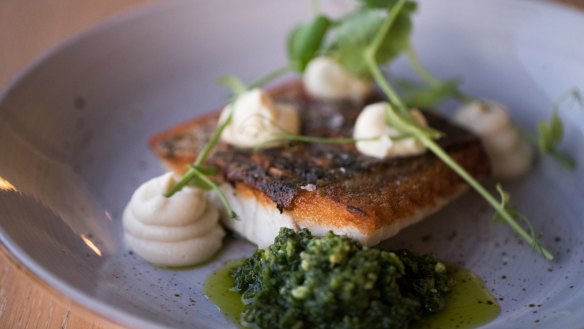Does barramundi only come from Australia?

How can barramundi be imported? Isn't it an Australian fish? B. Rotherham
Barramundi is an Aboriginal word possibly from the Darambal or Gangalu language from along the Fitzroy River west of Rockhampton. They used it to describe another fish, also called the southern saratoga. The term barramundi was adopted in the 1980s to market another fish altogether, Lates calcarifer. It was named by ichthyologist Marcus Bloch in 1790, using the term calcarifer, from the Latin, to describe its spurs. Barramundi is a hermaphroditic fish, which I am sure will upset many talkback callers. It hatches as male in freshwater and transforms into a female fish as it makes its way towards the sea to breed. It is a fish common to the waters of northern Australia and south-east Asia and is also called Asian sea bass. In Thailand it is called pla kapong, and in Bengali it is called it bhetki. Asian sea bass is grown extensively in farms in Asia and imported into Australia in large amounts and marketed here as barramundi. Sixty per cent of barramundi consumed in Australia is from overseas. Australia has an excellent wild caught and farmed barramundi industry.
Why can't we get good goose here in Australia? S. Holt
We grew up with German neighbours who raised geese for their Christmas table. No matter what they fed them, they were never fat enough for Weinachten Gans – Christmas goose. Geese are migratory birds and fatten up in autumn in time for the long flight to winter in warmer climes. (If you go to Noosa in June you'll still see Victorians doing similar.) That's why a winter goose is so plump and why its skin crackles so perfectly. Being on the other side of the world, geese here fatten up in time for Easter and are at their best up until June. Lucy MacKenzie from U Goose in Llangothlin near Armidale, NSW, grows truly excellent birds from their own special crossbreed. She has been able to get the genetics right for their climate to produce large, young birds with tender flesh weighing up to four kilograms ready for the Christmas table. "If you want that larger, fattier bird, then buy them at the end of autumn," she recommends. "They do freeze very well." She has about 3000 pasture-fed birds that spend their day on the dam or in the troughs. The birds are slaughtered in an on-farm abattoir, and there is a commercial kitchen on-site producing pates and other goose delicacies. See ugoose.com.au.
Letters
This alert came from Jim, a New Zealand reader. He was reacting to a piece recently on foraging for and cooking stinging nettles. He wrote, "New Zealand has a native nettle that makes the European nettle look like a timid puppy dog with no real bite. It, too, has been eaten historically, but you have to know what you are dealing with. Stings can lead to paralysis and other complications." There the Maori call it Taraongaonga or Okaoka and eat the stems, not the toxic leaves.
- Correction: an earlier version of this article quoted the incorrect statistic for imported barramundi. It should be 60 per cent.
Send your vexing culinary conundrums to brainfood@richardcornish.com.au or tweet or insta @foodcornish
- Read more: Why Australian seafood is worth the price
- More:
- Food
- Brain food
